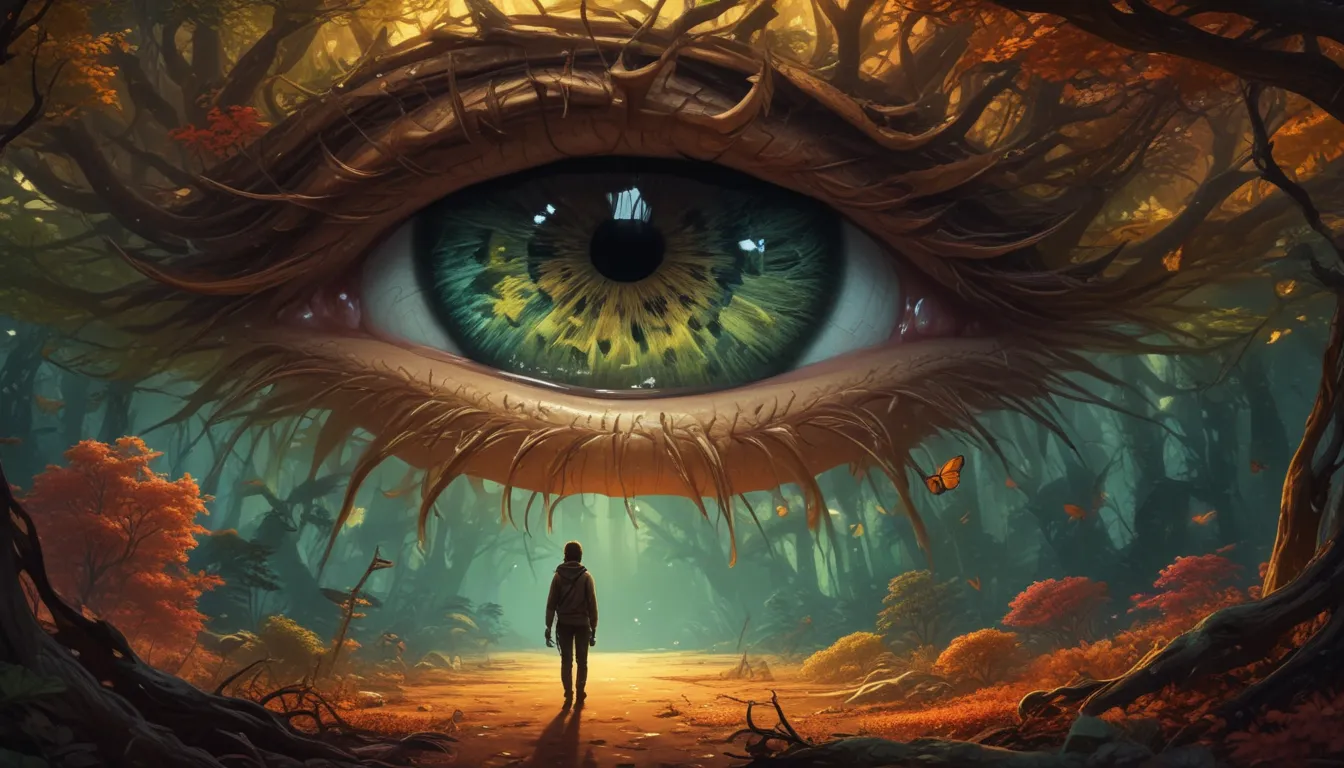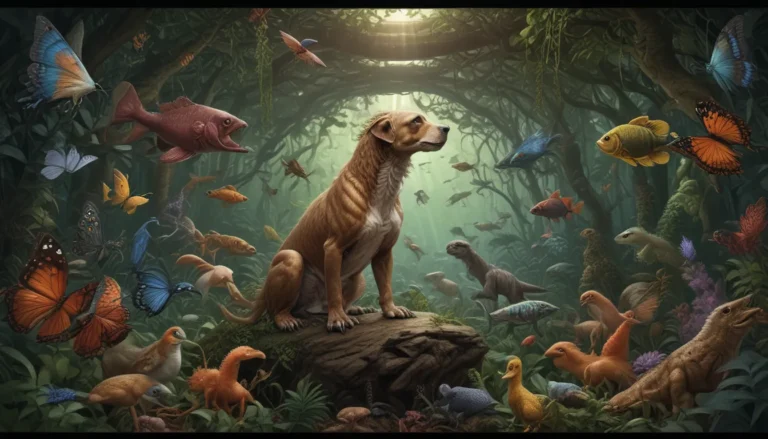A Note About Images: The images used in our articles are for illustration purposes only and may not exactly match the content. They are meant to engage readers, but the text should be relied upon for accurate information.
In the vast expanse of the natural world, mimicry emerges as a remarkable phenomenon that showcases the ingenious adaptations and survival tactics of various species. From deceiving predators to gaining protection, mimicry serves as a clever strategy employed by animals, plants, and insects alike. Join us as we delve into the captivating realm of mimicry and uncover 19 astounding facts that shed light on the diverse forms and functions of this fascinating adaptation.
Exploring the Diversity of Mimicry in Nature
Mimicry, a prevalent strategy in the animal kingdom, can be observed across a wide array of organisms, including insects, birds, reptiles, and mammals. This widespread phenomenon has independently evolved in different species, highlighting the versatility and effectiveness of mimicry as a survival mechanism.
Unveiling the Two Main Types of Mimicry: Batesian and Mullerian
In the intricate world of mimicry, two main types stand out: Batesian and Mullerian. Batesian mimicry occurs when a harmless species mimics the appearance of a harmful or toxic species to deceive predators. On the other hand, Mullerian mimicry involves multiple harmful species sharing similar warning signals to reinforce avoidance by predators.
Mimicry in Action: A Deceptive Defense Mechanism
One of the primary functions of mimicry is to confuse predators by imitating the appearance of a dangerous species. By resembling a toxic or venomous organism, the mimic gains protection from potential threats, making it less likely to be targeted by predators.
The Ballet of Butterflies: A Symphony of Colorful Mimicry
Butterflies, such as the Viceroy and the Monarch, exemplify Batesian mimicry with their striking patterns and colors that mirror those of toxic butterflies, deterring predators and ensuring their safety in the wild. This visual deception serves as a powerful defense mechanism in the world of butterflies.
Orchestrating Pollination: The Art of Floral Mimicry
Orchids have mastered the art of mimicry to attract pollinators. By resembling the appearance and scent of female insects, these exquisite flowers lure male insects for pollination, a phenomenon known as sexual or pseudo-copulatory mimicry. Through this deceptive strategy, orchids ensure the continuation of their species.
Masters of Disguise: The Chameleon-like Octopuses
Octopuses are renowned for their prowess in camouflage mimicry, seamlessly blending in with their surroundings by changing the color, texture, and pattern of their skin. This remarkable mimicry allows them to evade predators and ambush prey, showcasing the adaptive brilliance of these cephalopods.
Mimicry Beyond the Animal Kingdom: Plants With a Deceptive Edge
In the botanical realm, plants like the Indian pipe and corpse plant employ mimicry to protect themselves from herbivores. By mimicking the scent of predators or decaying animals, these plants deter grazing animals, showcasing the intricate interplay between mimicry and survival in the plant world.
The Intriguing World of Leaf Insects: Masters of Mimicry
Leaf insects fascinate with their remarkable ability to mimic leaves in shape, color, and movement, rendering themselves virtually indistinguishable from real foliage. This exquisite mimicry serves as a potent defense mechanism, allowing these unique insects to evade predators and survive in their leafy habitats.
The Enigmatic Dance of Coral Snakes and Milk Snakes: A Tale of Mimicry
Coral snakes and milk snakes engage in Batesian mimicry, with the latter mimicking the warning coloration of venomous coral snakes to reap the benefits of predators’ learned avoidance of dangerous prey. This mimicry confers a survival advantage to milk snakes, highlighting the intricate dynamics of mimicry in predator-prey interactions.
Adapting to the Environment: The Camouflage Mimicry of Chameleons
Chameleons showcase a fascinating form of mimicry by changing their skin color to match their surroundings, providing effective camouflage and protection from predators. This adaptive trait allows chameleons to blend seamlessly into their environment, underscoring the remarkable evolutionary strategies employed by these reptiles.
The Dynamics of Rapid Mimicry Evolution: A Swift Response to Environmental Pressures
Mimicry can evolve rapidly in response to changing environmental conditions, as seen in the continuous interaction between predators and mimics. This dynamic adaptation underscores the agility and flexibility of mimicry as a strategy for survival and success in the natural world.
Illuminating the Deceptive Lure of Anglerfish: A Masterclass in Mimicry
Anglerfish exhibit a deceptive form of mimicry with their fleshy, glowing lure that attracts unsuspecting prey towards their sharp teeth. This ingenious mimicry enables anglerfish to capture food with ease, showcasing the intricate strategies employed by predators to secure their next meal.
The Melodic Mimicry of Birds: A Symphony of Sounds
Birds like the superb lyrebird possess a remarkable talent for mimicking various sounds, including the calls of other bird species, mechanical noises, and even human voices. This auditory mimicry serves as a tool for communication, courtship, and territorial defense, highlighting the versatility of mimicry in the avian world.
Nudibranchs: A Palette of Mimicry in the Ocean Depths
Nudibranchs, colorful marine slugs, employ mimicry to mimic the toxic or unpalatable characteristics of other organisms they encounter, effectively deterring potential predators. This adaptive strategy showcases the sophisticated mimicry techniques employed by marine creatures to survive and thrive in their underwater habitats.
Scarlet Kingsnakes: Embodying the Art of Deceptive Mimicry
Non-venomous snakes like scarlet kingsnakes utilize mimicry to mimic the pattern and colors of venomous coral snakes, confusing predators and safeguarding their own safety in the wild. This form of defensive mimicry provides these snakes with a survival advantage in their natural habitats, underscoring the intricate interplay between mimicry and survival strategies in the animal kingdom.
Mutualistic Mimicry: A Balancing Act of Protection and Benefit
In mutualistic mimicry, the mimic gains protection or benefits, while the model remains unharmed. An exemplary instance of this phenomenon is seen in cleaner fish mimicking the appearance of cleaner wrasses, showcasing a mutually beneficial relationship where both parties derive advantages from the mimicry.
Convergent Evolution of Mimicry: Parallel Paths to Survival
Mimicry can arise through convergent evolution, where similar selective pressures in different environments lead to the independent evolution of mimicry in unrelated species. This striking convergence underscores the adaptability and versatility of mimicry as a mechanism for survival in diverse ecological niches.
Illuminating the Marvels of Mimicry: A Symphony of Nature’s Creativity
These 19 astounding facts about mimicry offer a glimpse into the extraordinary diversity and complexity of this captivating adaptation strategy in nature. From visual deceptions to behavioral mimicry, the world of mimicry abounds with wonders that continue to enchant scientists and nature enthusiasts alike, unveiling the ingenious strategies and fascinating adaptations employed by organisms to thrive in their environments.
Embracing the Enchantment of Mimicry
In conclusion, mimicry stands as a captivating phenomenon that showcases the myriad ways in which living creatures adapt and evolve to survive and thrive in their environments. From deceptive appearances to intricate behaviors, mimicry embodies the creativity and resourcefulness of nature, offering insights into the remarkable strategies employed by organisms to navigate the complexities of the natural world. Whether for protection, predation, or reproductive advantage, mimicry serves as a testament to the ingenuity and adaptability of life in its myriad forms.
Unveiling the Mysteries of Mimicry: Your Gateway to Nature’s Intriguing Adaptations
Delve deeper into the enchanting world of mimicry and explore the intricate mechanisms behind this captivating phenomenon. From Batesian mimicry to Mullerian mimicry, each form offers a treasure trove of enigmatic facts waiting to be discovered. Embark on a journey of discovery as you unravel the mysteries of mimicry and witness the astonishing adaptations and survival strategies that define the natural world.
We hope you found this exploration of mimicry informative and engaging. As we continue to uncover the wonders of the natural world, your curiosity and passion for discovery play a vital role in shaping our understanding of the intricacies of life around us. Thank you for joining us on this journey of exploration and learning.
Stay tuned for more fascinating insights and captivating discoveries as we delve deeper into the mysteries of nature’s extraordinary adaptations. Your thirst for knowledge and discovery fuels our commitment to delivering engaging and informative content that inspires and enlightens. Thank you for being a part of our community of curious minds and avid explorers.






